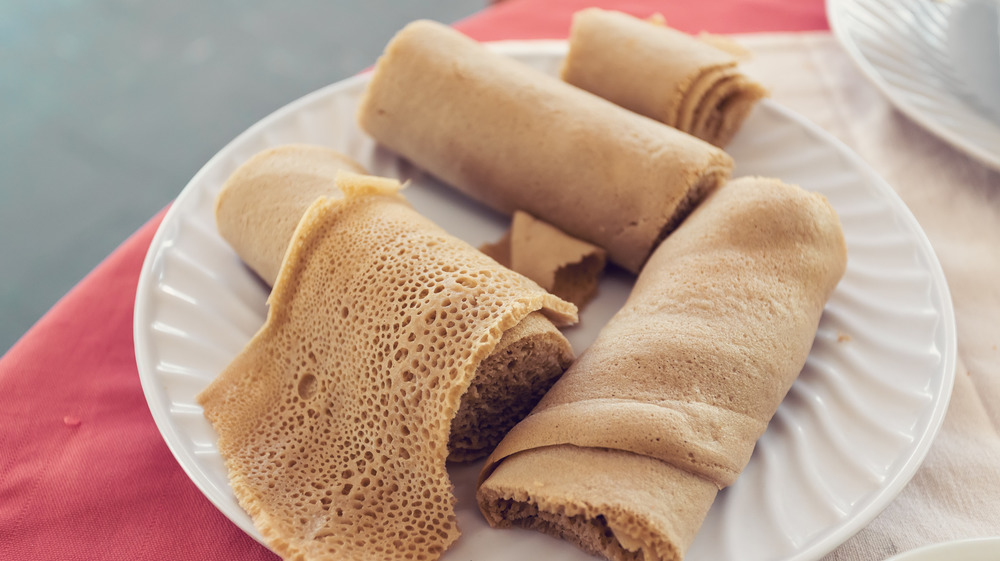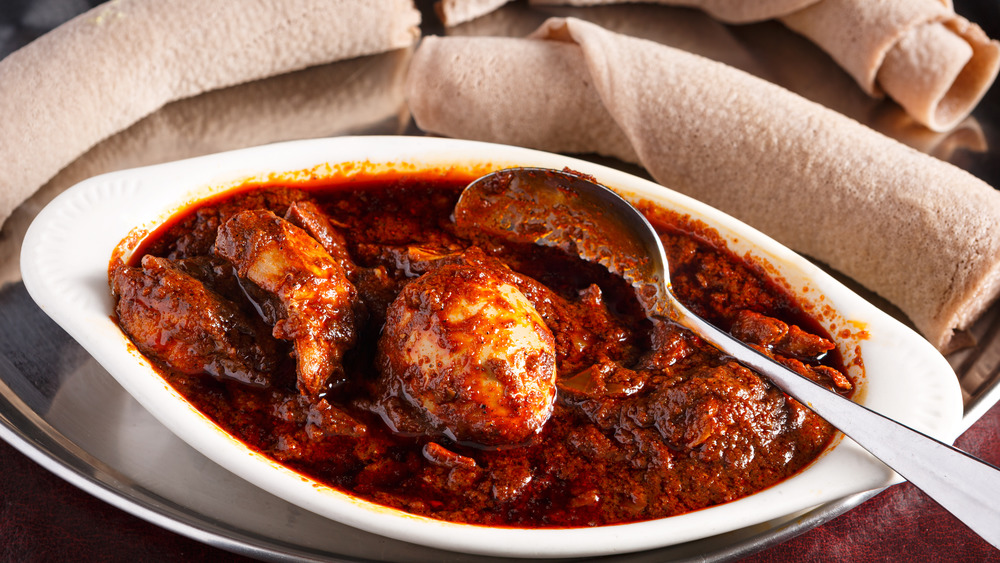What Is Injera And What Does It Taste Like?
If you have ever visited a traditional Ethiopian restaurant, you have probably indulged in some injera, even if you didn't realize it. In lieu of forks or knives, this spongy sourdough takes the place of eating utensils, plates, and sometimes tablecloths (via Daring Gourmet). The bread gets its signature taste and look thanks to teff flour, one of the oldest heritage grains in the world. Teff comes in a variety of colors, including red, dark brown, and ivory white. If you want the most distinct injera taste, don't settle for light teff — make sure to find some of the bread made with dark brown teff. The bread gets topped with almost any traditional meal, soaking up the rich flavors of anything that you can throw at it. It goes particularly well with Doro Wat, the iconic Ethiopian spicy chicken stew.
The history of this all-purpose bread traces back for millennia. Historians date the domestication of teff as far back as 4000 BC, but due to limited rainfall in Eritrea and Ethiopia, only certain areas could grow the necessary teff used to make the bread, originally making it a luxury item. Injera reflects the lifestyle of its place of origin — the bread is vegan, thanks to many Ethiopians forgoing meat in accordance with their Orthodox Christian beliefs, and thanks to the use of teff, injera doesn't contain gluten (via Toronto Star). With such a rich history, unique ingredients, and all-purpose function, the bread naturally has a flavor like no other.
The one-of-a-kind flavor of injera
If you eat a piece of injera without any accompaniment, the bread tastes tangy, bitter, and potentially even sour (via Wild Junket). The unique flavor bouquet of the bread stems from its fermentation process. After mixing the base ingredients, the baker needs to rely on natural, airborne yeast to help ferment the batter, and at first glance, this process looks like your bread has started growing mold (via Daring Gourmet)! Instead of getting baked in an oven, injera develops its unique texture from getting cooked on a griddle-like flat surface and steaming, resulting in a one-of-a-kind spongy texture that can soak up anything you might throw at it.
Next time you go out for Ethiopian and feel apprehensive about eating with injera, don't hold back — taste why this bread has stood the test of time. Its unique, tangy flavor and spongy texture truly make eating a fun experience and make you wonder why more foods don't rely on bread as a utensil and place setting. Give the bread a shot. We think there's a good chance you won't be disappointed!

